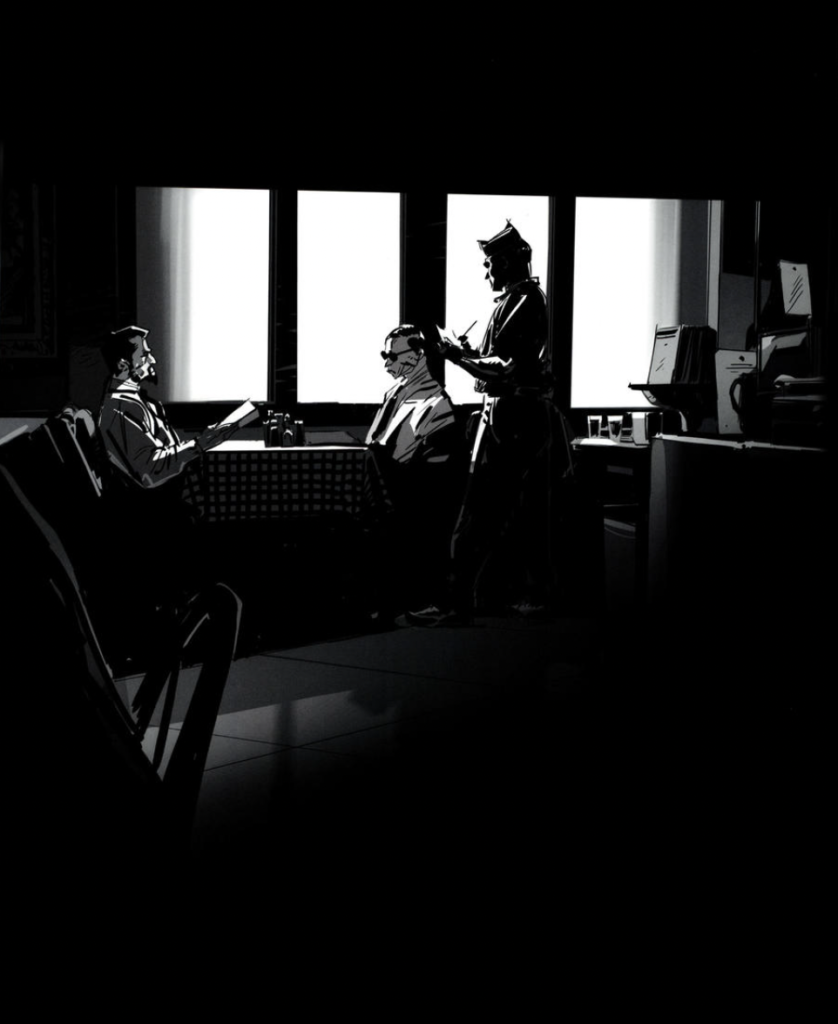In the past two weeks, I researched storytelling, especially visual storytelling focusing on illustration. In the first chapter of Framed Ink: Drawing and Composition for Visual Storytellers, Marcos Mateu-Mestre gives a great first insight into how to start creating narrative art and which aspects are important to consider (cf. 2010: 13-16).
As designers or artists, it is first of all important to know what we want to and need to express with our designs, so we can choose what elements we can use to get our intended meaning across. For visual storytelling that uses a sequence of images or illustrations, Mateu-Mestre emphasizes that each image should visually convey the mood and emotions of what is happening in the story at that moment. Depending on whether the moment in the image is very quick and filled with action, slow and sad, or lively and happy, the composition and elements in the illustration will be very different. Furthermore, while creating we should not think of each image as a separate element, but it should be seen in relation to the whole story. This way, we can establish a rhythm in the story. (cf. Mateu-Mestre 2010: 11)
Making the Audience Feel the Story
Each image should also have a specific purpose in the story, no image should just be added for aesthetic reasons without a meaning. According to Mateu-Mestre, creating a storyboard or any kind of visual story is more of a storytelling-oriented thinking process and it is very different from just drawing art for people to look at. If an image is just beautiful but it has no purpose in the story, the audience will get distracted and get pulled out of the whole story. With visual stories, the audience should forget they are just looking at images, it should be an immersive experience. Every environment or scene we see in real life evokes an emotional response in us. Even if we don’t notice it consciously, everything we see makes us feel a certain mood. We are put in different moods when we see a sunny landscape, or a dark alleyway at night – every environment evokes feelings in us. As creators, we need to notice and observe these details so we can capture the moods we want to express and recreate them in an illustration or a visual story. It is important that we feel our story ourselves – otherwise, we can’t move our audience. (cf. Mateu-Mestre 2010: 14)

When we are creating a visual story, we are creating a world – everything in this world has to be coherent. Before we draw anything, we should be sure what the tone of our story is. Is it funny and light-hearted, is it dramatic and emotional? When we are sure what our story should make the audience feel, we can establish our drawing style and the way we choose to tell and depict the story based on what we want the story to be. This is how we can “build” our world. Mateu-Mestre also points out that it is often good to leave things to the audience’s imagination when telling a story, both on a visual and narrational level. We should not explain everything in detail, we should often insinuate and foreshadow details and parts of the story so the audience can fill these information gaps in their own minds. This makes the experience more immersive and makes the audience want to continue with the story. No matter what is shown, every person still has their own way of interpreting and thinking about things based on their personality and past experiences and as creators, we should encourage the audience’s imagination and play with people’s different ways of perceiving and interpreting things. (cf. Mateu-Mestre 2010: 15)
Bibliography:
Mateu-Mestre, Marcos (2010). Framed Ink: Drawing and Composition for Visual Storytellers. Culver City, CA: Design Studio Press.